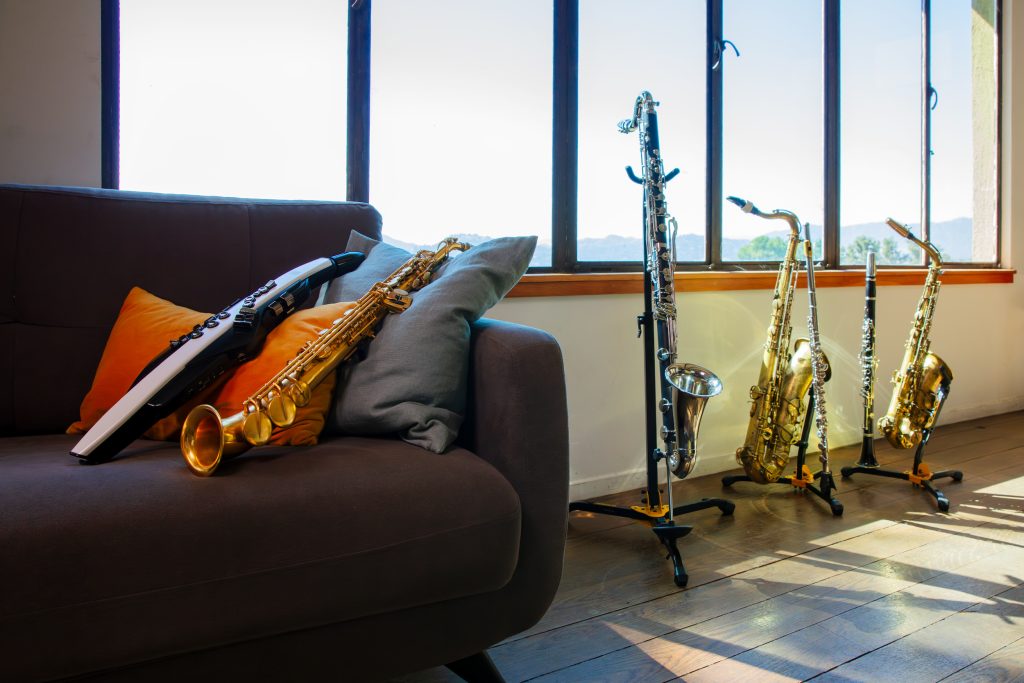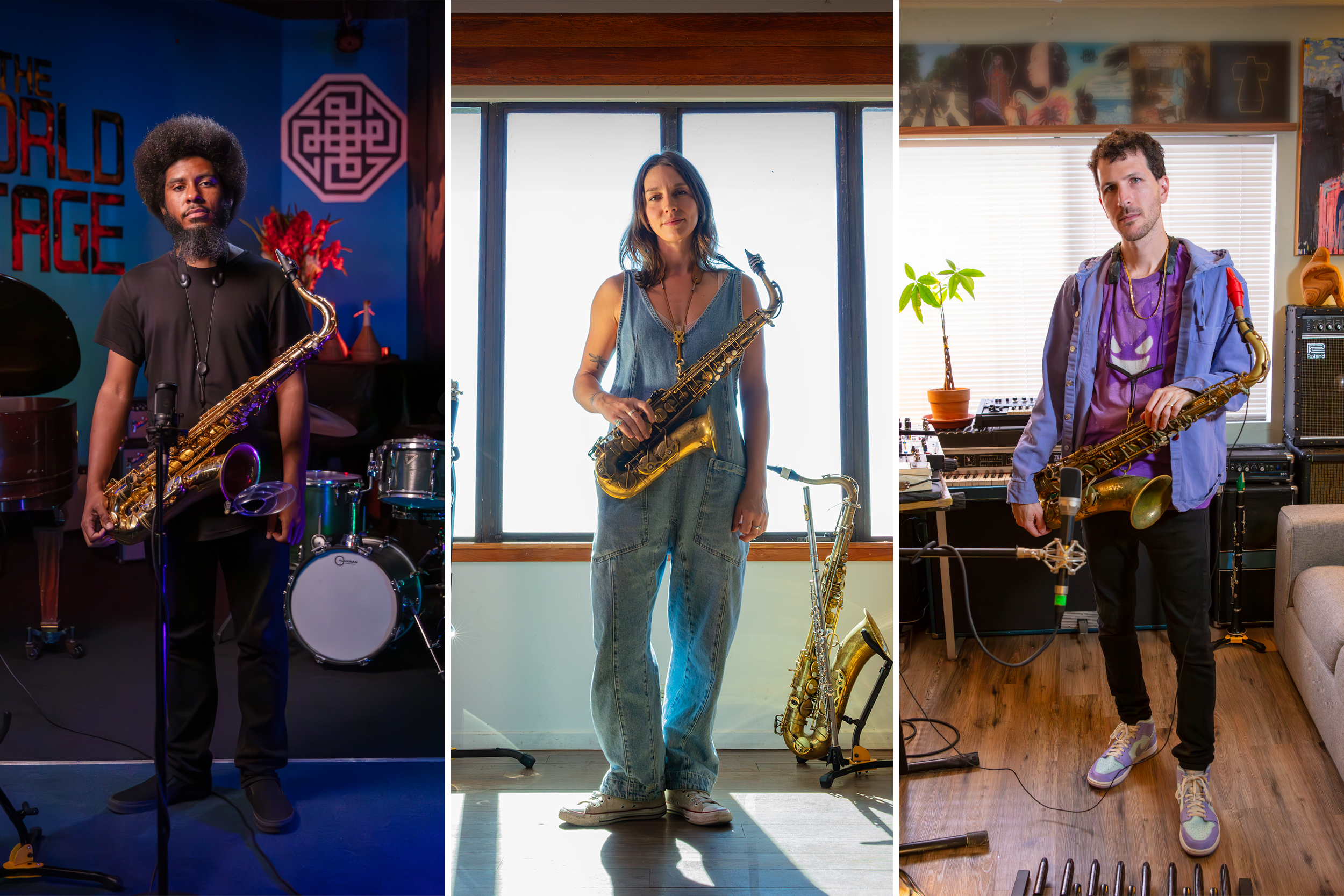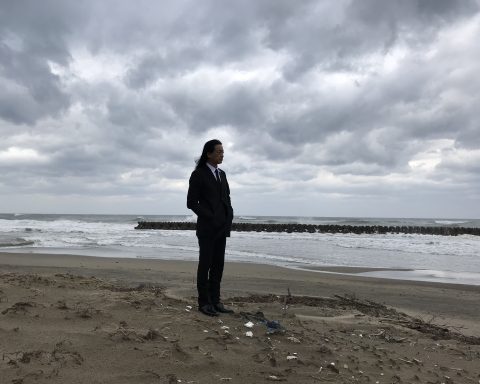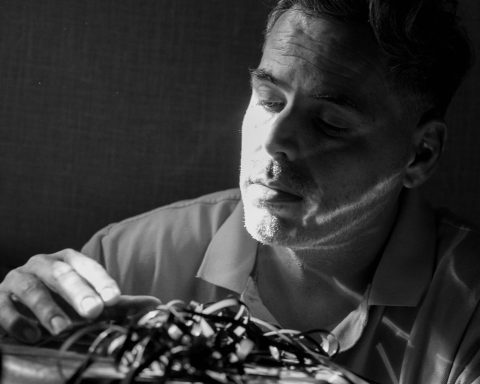It’s the source of life, the perpetual flow that binds us to our surrounding atmosphere. In a physiological sense, through breath, we absorb the outside world and push it back out in an endless cycle of renewal. Breath also facilitates the most emotional tool of artistic expression—the human voice. But there is another, equally widespread, musical application of breath: wind instruments. From the 60,000-year-old Divje Babe cave flute to the trumpet and saxophone to the Roland Aerophone, wind instruments derive power from the air flowing through them.
Randal Fisher, Steve Brickman, and Hailey Niswanger are all Los Angeles-based professional wind players with contrasting styles encompassing jazz, experimental, and soul music at many intersecting points. A throughline is how each allows music to circulate through them, much like air courses through our bodies—in and out. In these rich conversations, they reflect on their wind instrument journeys, creative processes, and the breath itself.
Randal Fisher
Inspiration is Contagious
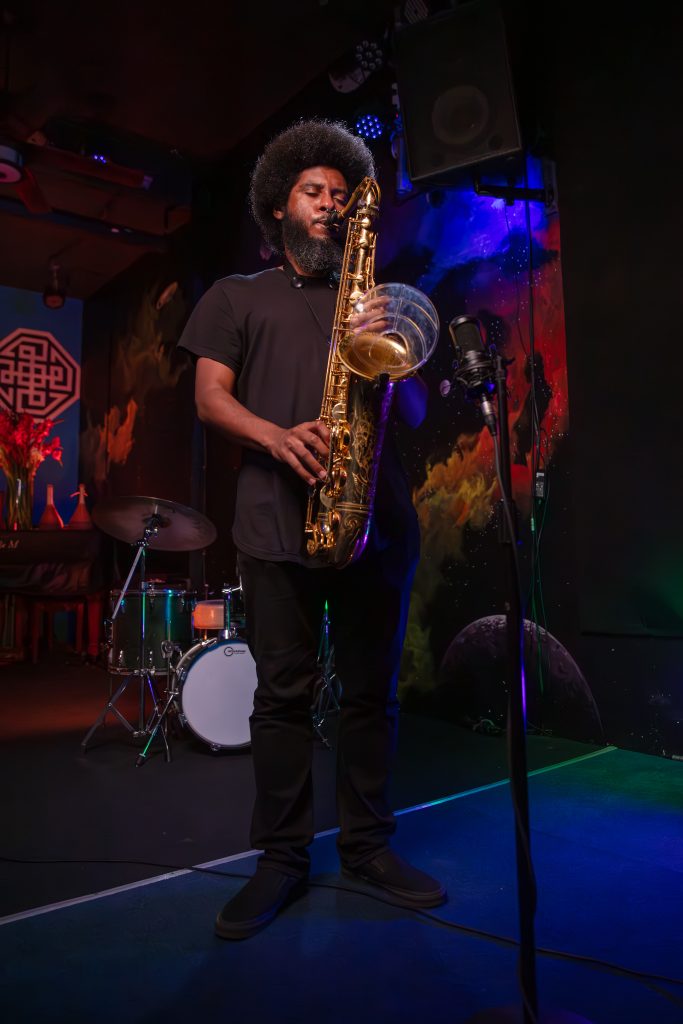
Randal Fisher stands alone under the spotlight at The World Stage in historic Leimert Park. With his saxophone hanging around his neck, he’s at home in the space that helped develop his musical chops. From big bands to small jazz combo ensembles and solo work, Fisher has made a name for himself within the LA music scene and beyond. However, his story starts here.
The small venue is an educational pillar within the South Los Angeles neighborhood. “The first time I came here, I was 13. They don’t serve alcohol, so young players can come and share space with some of the older, seasoned masters,” Fisher explains. “It’s the kind of place where you can come and be a part of the community, be accepted, and learn without being judged.”
Keeping Tradition Alive
Much like traditions passed down within families, this flow of auditory knowledge helps fuel the future of jazz. “You’re collecting information, experiences, memories, and getting to play with these people who’ve played for decades,” Fisher says.
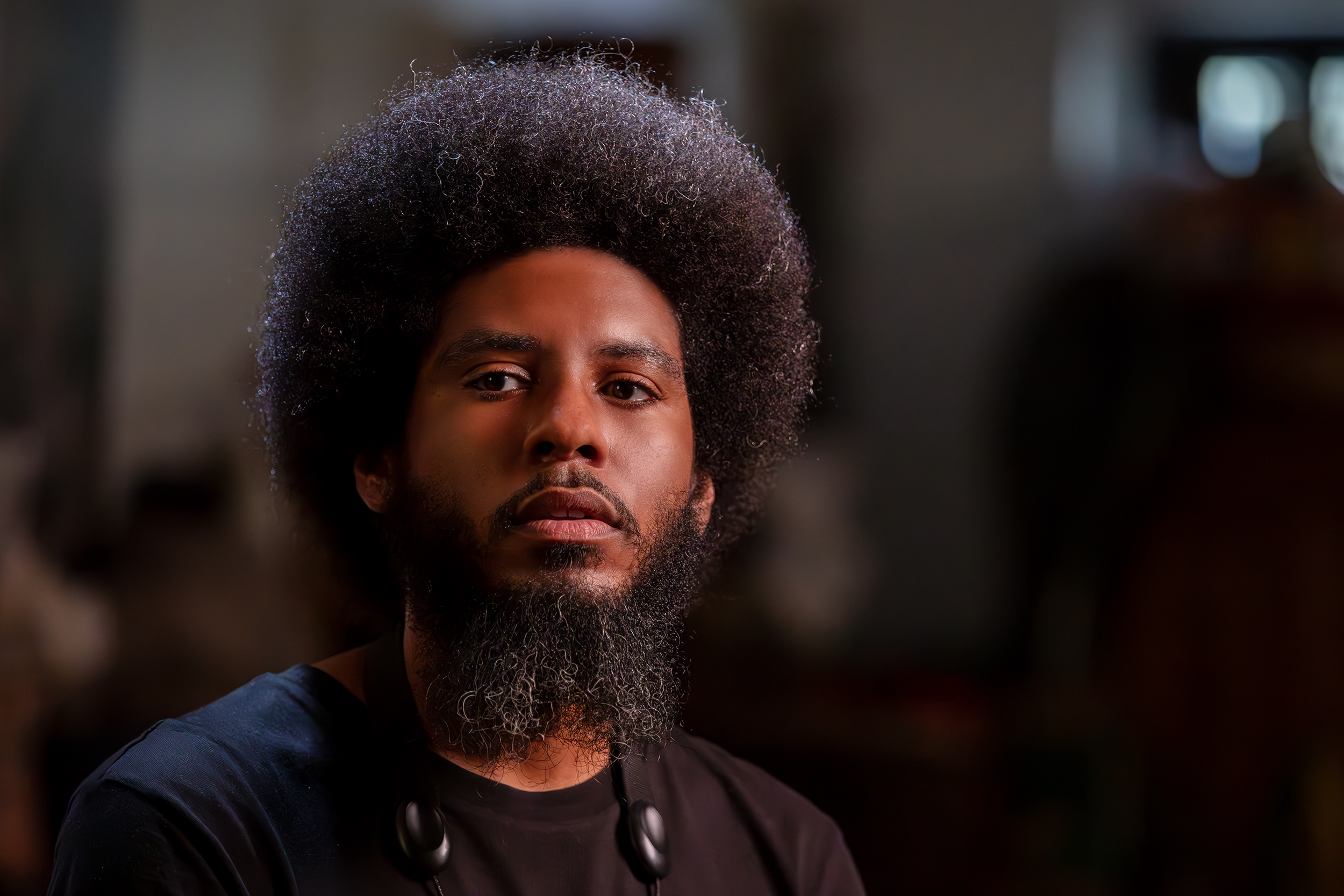
This musical masterclass is paired with constructive criticism that helps shape players’ sound and confidence. “If there’s something you’re doing that can be improved on, you’ll have people be honest and tell you. They won’t tear you down, but they’ll motivate you,” Fisher emphasizes. “There’s always a question of where this music will go. So, when you see young players who are serious about this music, it’s a relief—the future of jazz is in good hands.”
Jazz is for Everyone
Part of the beauty of both playing and listening to jazz is the approachability of the genre. “I really love that this music is for everyone. You don’t have to pay hundreds of dollars to buy a seat at a stadium to see it,” Fisher states. “The people who make a living playing jazz are not so larger than life that they’re big celebrities. I really enjoy that.”
One Breath, One Sound
While wind players have opportunities as soloists, most of these musicians perform in ensembles, too. Fisher is no different. And community is at the heart of big band performances. Individual wind players strive to blend with their fellow musicians’ sound—no one voice outshining the rest.
“The goal of playing in a horn section is to sound like one instrument. When you’re locked in together, you feel like you’re part of something bigger than yourself,” Fisher says. “We’re all ingredients going into this meal that the audience is enjoying.”

“The goal of playing in a horn section is to sound like one instrument. When you’re locked in together, you feel like you're part of something bigger than yourself."
RANDAL FISHER
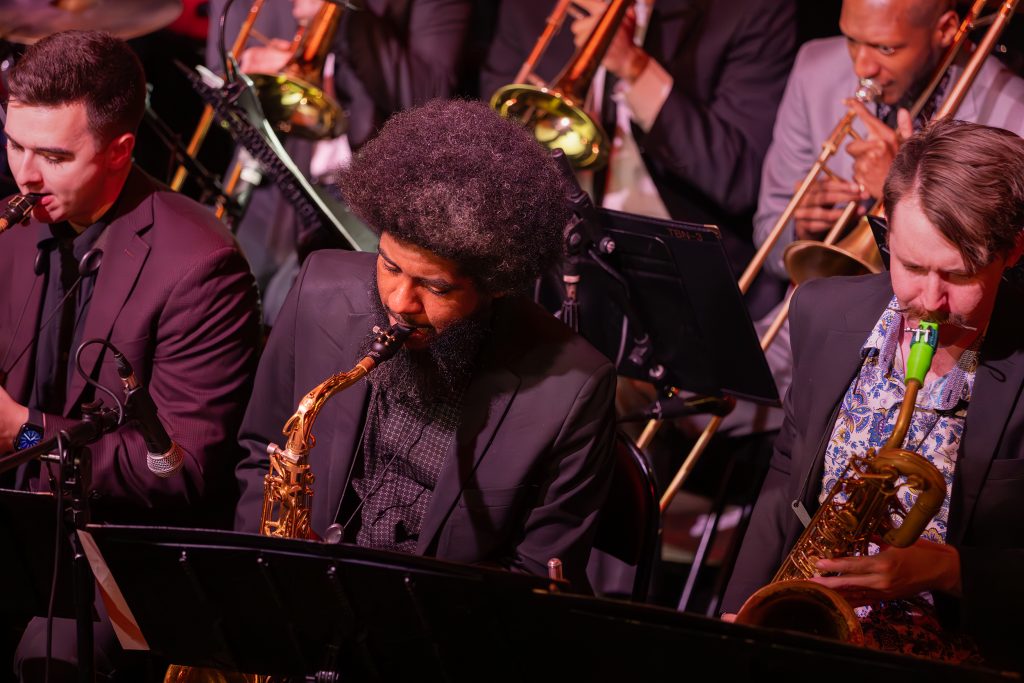
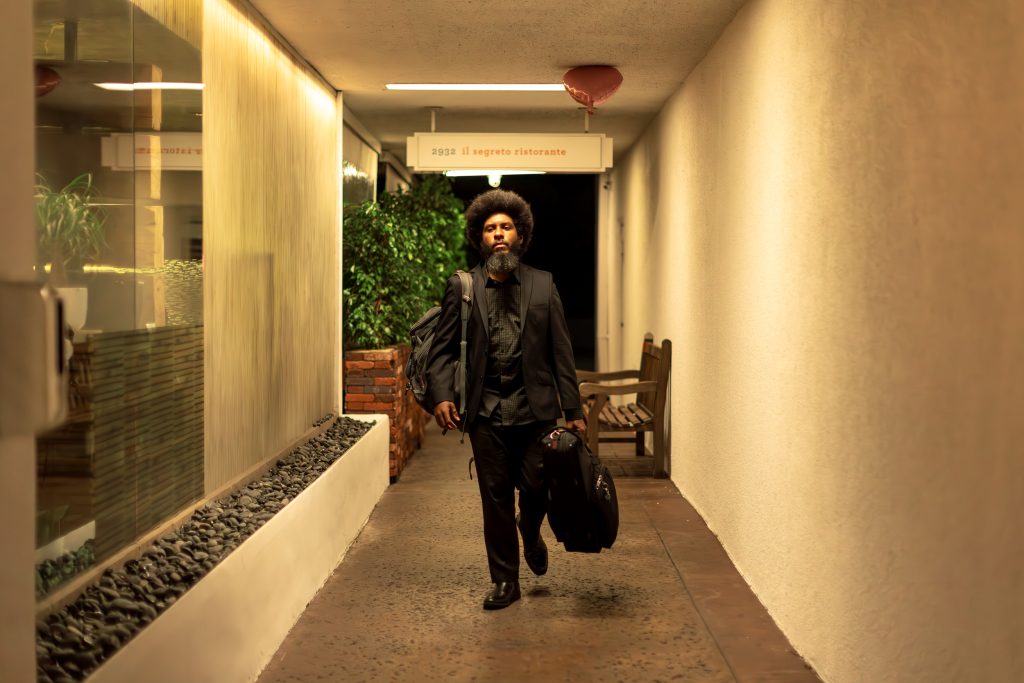
Wind Power
The connection among ensemble players extends to their instruments as well. Fisher explains the unique bond forged by breath between him and his saxophone. “When you get to a place where you feel connected to your instrument, blowing air through my sax becomes second nature. You don’t even really feel it, and the instrument is an extension of you.”
The use of airflow not only powers the sound from a wind instrument but is also a form of expression. “Horn players can use dynamics in a different way,” Fisher states. “We can start a note very quietly and increase the airspeed, making it louder or softer without having to adjust anything else. And I think that’s special for a horn that other instruments aren’t mechanically able to do in the same way.”
Multifaceted Talent
While the saxophone is Fisher’s primary instrument, his talent doesn’t begin or end there. “I started on clarinet when I was 11 years old,” Fisher recounts. Over the years, he’s added various saxes, flute, and the Aerophone to his repertoire.
"I could play anywhere and feel, share, and receive the love that's inherent with this music."
RANDAL FISHER
Thanks to the Aerophone’s familiar design, Fisher can add a wide range of new sounds into his performances. “The [Aerophone] keys and the mouthpiece are modeled so closely to the saxophone that there wasn’t a learning curve on that end,” he explains. “The Aerophone is refreshing because I could continue to do everything I’m doing on the saxophone on this digital instrument and produce these electronic sounds.”
A New Perspective
And the benefits don’t stop there. “When I bought the Aerophone, I didn’t plan on playing it with other musicians. I planned on using it as a private practice tool,” he explains.
However, after the pandemic ended, new performance opportunities provided broader applications for the digital wind instrument. “I joined a couple of new bands that were utilizing a lot more electronics in the music we were making,” Fisher remembers. “I thought, ‘Wow, this is a great application for the Aerophone because now I can play with a synthesizer and all these different sounds that a saxophone can’t do.’”
After a short walk down the street to the historic Art Deco Vision Theatre, Fisher, eyes closed, appears lost in the song he’s playing. The peace surrounding him is almost palpable as the swelling sound of jazz engulfs the bustling intersection. Summing up this feeling, Fisher concludes, “I could play anywhere and feel, share, and receive the love that’s inherent with this music.”

Steve Brickman
Exploring the Blank Canvas

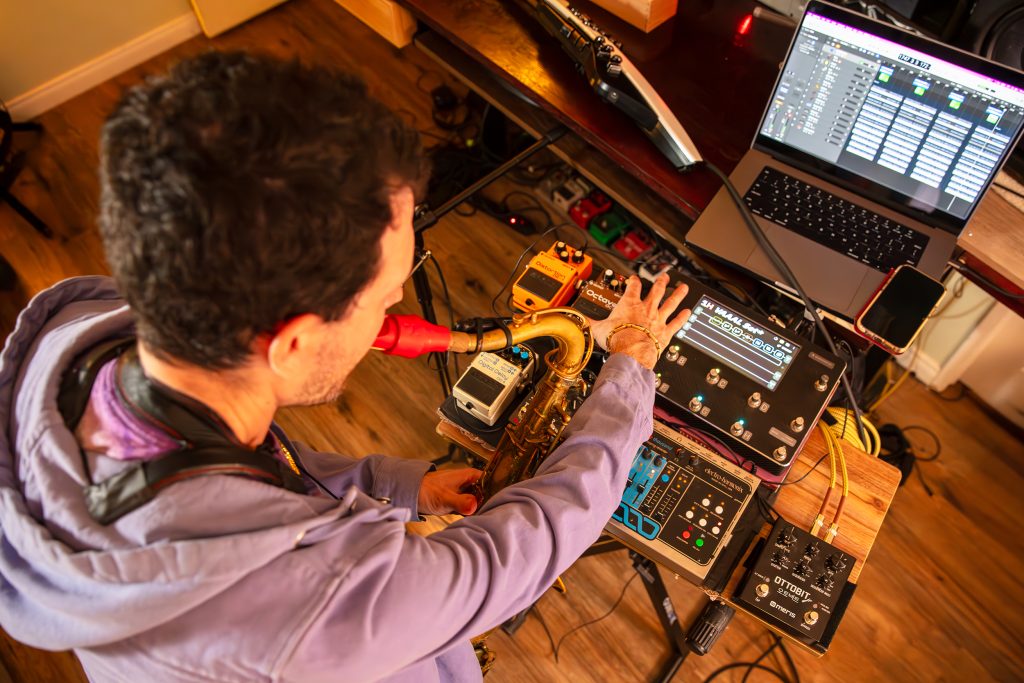
Steve Brickman is a vessel for sonic creativity; music simply pours from him. Brickman’s imagination seems infinite, from self-penned conceptual rock operas to experimental performance and all points in between. The journey of this multi-instrumentalist has taken him from Boston to Miami to New York to Los Angeles, where he currently records and creates music. It’s in his eclectic home studio—surrounded by vintage gear, esoteric paintings, and album sleeves by heroes like Justice, Pink Floyd, and Miles Davis—that Brickman feels truly at home. In addition to his many projects and collaborations, Brickman plays with rising indie star Clairo, where he met fellow woodwindist Hailey Niswanger.
Changing Perceptions
While he plays guitar, piano, and a host of other instruments, Brickman’s story begins with saxophone. “I was five or six, and I told my parents every year I wanted to play saxophone. They got me this toy saxophone; it was the happiest moment of my life.” Brickman appears visibly moved by the memory. “Then, I picked up the clarinet and saxophone, and it felt meant to be.”
One particular artist provided a jolt of early inspiration. “One of my first forays into the electronic world was hearing Herbie Hancock’s Headhunter. It changed my perception of jazz and music and opened my ears to other instruments besides the piano, bass, drums, and saxophone.”
The groundbreaking album changed Brickman’s trajectory. “That got me started exploring stuff outside of the saxophone. My dad would travel around for work. He got this cool tin whistle from Ireland.” Brickman blows into the family heirloom, filling the small room with a wistful, childlike sound.
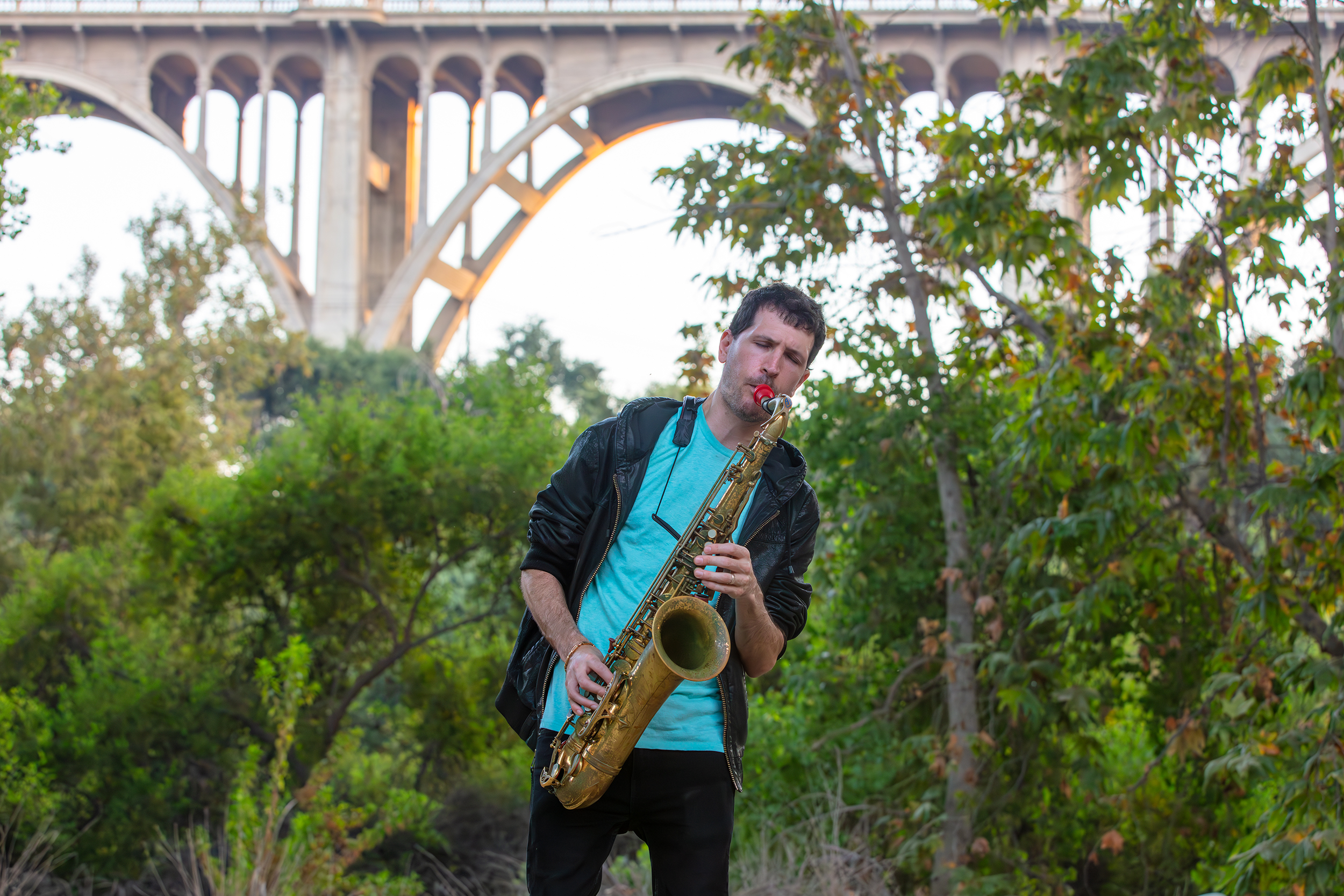
The Live Life
Clairo’s extensive touring schedule took Brickman far from his cozy studio and into the largest live spaces of his career. “The first time I played with Clairo was a life-changing experience,” he says. “Before then, I played for maybe fifty people. Our first show had two thousand screaming fans right up to the stage.”
Besides the crowd energy, each gig has its distinctive sonic elements. “We played amazing places like Radio City Music Hall and Glastonbury Festival.” He explains that when playing a wind instrument, the actual acoustics of a venue make a profound impact. “At the Greek Theater or in some of these old vaudeville theaters, you feel the sound you’re playing in that spot, which inspires something different.”
Uncharted Territory
Part of Brickman’s unique style is the way he manipulates instruments with effects. Although he’s applied this style for years to guitar, the saxophone is a new addition. It began when a friend gave him a pickup. “I’d never really heard saxophone through pedals like a ring modulator,” Brickman explains. “There’s a magic to diving into uncharted territory with the saxophone, where you’re bound only by the ideas in your head. It’s an evolution.”
The Aerophone dovetails perfectly with his current mindset. “It’s perfect timing because I’m working on a solo album, a fusion of all my experiences from the rock, electronic, and acoustic saxophone worlds.”
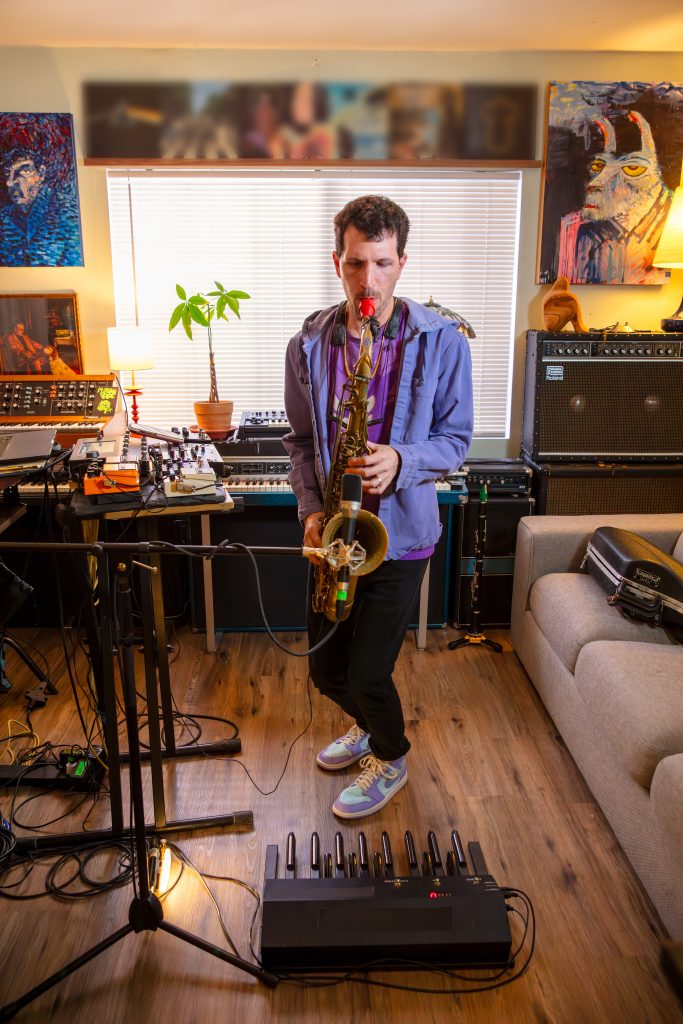
“There's a magic to diving into uncharted territory with the saxophone, where you’re bound only by the ideas in your head. It’s an evolution.”
STEVE BRICKMAN


Brickman believes the digital wind instrument will add an entirely new flavor to the effort. “The Aerophone can give me the sounds of a synthesizer but with the expression of the saxophone.”
Still, the saxophone remains a thread throughout all his creative adventures. “It’s been there with me through different life things. It has those memories and stories I can keep telling with it.”
Taking Note
For an artist as unconventional as Brickman, it’s no surprise he has an equally unique method of notating music. “I visualize music differently than I think most people do.”
He holds up a few pieces of paper covered with squiggles and hand-drawn designs. “I use shapes, curves, and arrows pointing to a section—it’s a choose-your-own-adventure.” Like all things Brickman, his approach is a decision, not a compromise. “I can notate perfectly, but the way I choose and prefer to create is how I do it,” he emphasizes. “I write music on a blank canvas and see where it takes me.”
Mad Scientist
To demonstrate the practice behind his theory, Brickman hooks up his effects rig, creates an on-the-spot improvisation using the Aerophone to build a soundscape, and then improvises atop it with a saxophone. “I feel like a mad scientist,” he says, describing his musical brew. “I have all of these different chemicals I’m experimenting with—piano, saxophone, flute, effects, then looping them, making crazy sounds.”
A few days earlier, Brickman’s canvas was an outdoor space beneath the iconic Colorado Street Bridge. There, in the setting sun of a Pasadena golden hour, surrounded by brush, Brickman let the sounds flow out of him into the ether. Still, indoors, outdoors, studio, live—Brickman is confident in his role as conduit and communicator. “I feel like I concoct a recipe of mystery and magic and see where it goes.”

Hailey Niswanger
Musical Offering
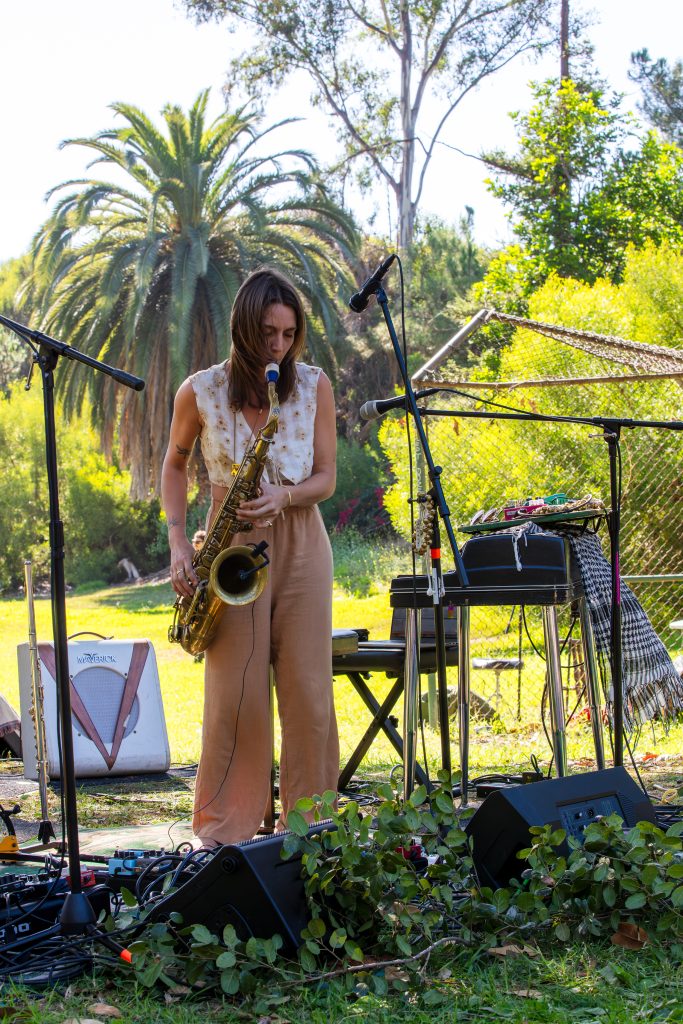
It’s early afternoon, and Hailey Niswanger is performing in Elysian Park as part of an event curated by the forward-thinking jazz label Leaving Records. She is playing as half of OHMA, her duo with Mia Garcia, in a grassy area called Montecillo De Leo Politi. The sun is shining, children are dancing, and an artist paints the scene on a small canvas—it’s as idyllic as Southern California gets, and Niswanger beams at the audience.
In the Moment
“I love getting closer with the immediate community,” she says, “giving this offering, sending out love through music.” Today, she speaks from Zorthian Ranch, an urban farm founded by sculptor Jirayr Zorthian, nestled in the Altadena hills. In one of its rustic cabins, Niswanger sits beside an entire wall of windows, flanked by her collection of wind instruments, including a formidable bass clarinet. Downtown Los Angeles is visible in the distance.
This light-dappled artist enclave is where OHMA recorded its forthcoming EP, which speaks to the nature-lover in Niswanger’s soul. “I love what we made in the studio with multiple layers and access to incredible gear,” she says. “But it was such a special experience to create a musical offering outside with the birds, straight to tape, where the music can’t really be altered after. A very beautiful way to capture an intimate musical moment.”

"The purity of the sound cuts through, and to have a good sound, you need air, life force."
HAILEY NISWANGER
The Flow
Flowing from moment to moment is something Niswanger knows a lot about. After growing up in Oregon, her burgeoning talent took her to Berklee College of Music, where she quickly established a reputation as a monster player. (“Everyone was saying, ‘You gotta check out Hailey,’” Randal Fisher recalls from a summer spent at Berklee.) From there, Niswanger fell into the New York City jazz scene and ultimately landed in Los Angeles.
Now ensconced in LA, she has lent her skills to Beyonce, Incubus, Clairo, and scores of other heavy hitters while establishing her projects, OHMA and MAE.SUN. To Niswanger, the Los Angeles music community fosters connection. “There’s much more of a thread here than in New York, a lot more crossing over of genres. It’s a beautiful city to be a part of.”
As further testament to LA’s musical cross-pollination, she bursts with praise for Fisher and Brickman. “Steve has been such a joy to collaborate with and is such a solid and talented player. And Randal, I’ve been hearing about him being one of the best saxophonists on the LA scene since I arrived here over five years ago.”


“A lot of my meditation comes through my instrument. I do my long tones to really drop in and resonate with one note."
HAILEY NISWANGER
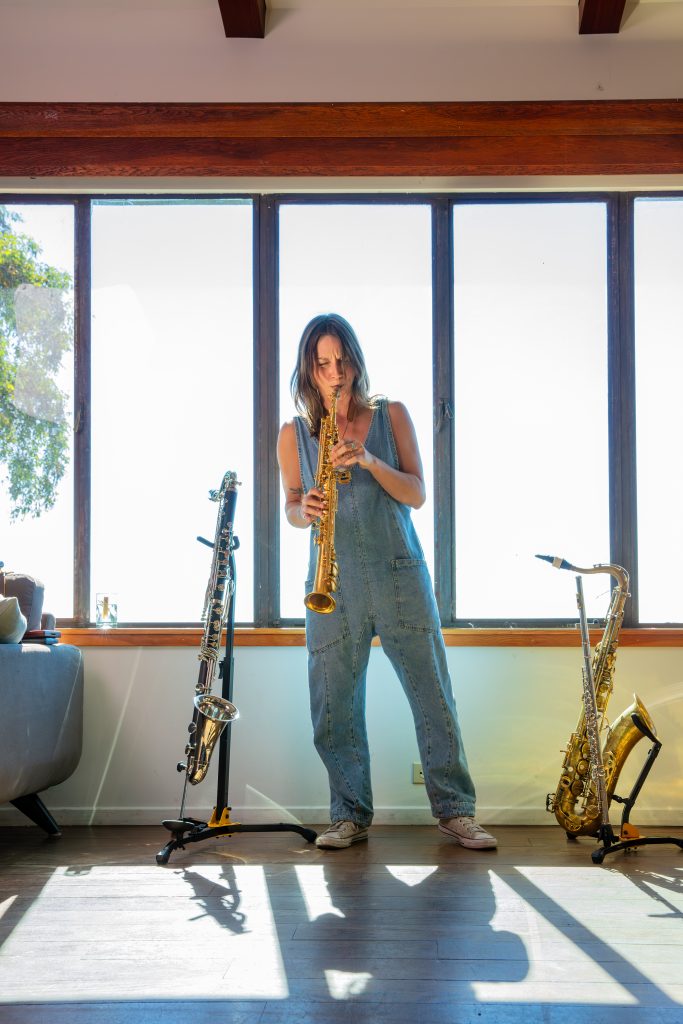
Purity of Sound
A true musical polymath, Niswanger is equally adept at flute, clarinet, soprano, alto, tenor, and bass clarinet. The common thread is the way woodwinds affect her spirit. “I’m a tiny person, and I love how big I can feel,” she says. “The purity of the sound cuts through, and to have a good sound, you need air, life force.”
For wind instrument players like Niswanger, awareness of breath is a constant. “It’s ingrained in me, practicing my breath and my air. It doesn’t just come out in notes—it’s the push and pull of the flow of each line. We can’t live without it.”
She builds that consciousness into her practice regimen. “A lot of my meditation comes through my instrument. I do my long tones to really drop in and resonate with one note.”
An Early Connection
Niswanger initially felt drawn to wind instruments at age eight when she heard the word clarinet at summer camp. “I had no clue what it was,” she recalls. “I just liked the sound of the name and beelined for the music tent where I had my first lesson.”
Things progressed quickly. “At the end of the week, my teacher told my mom to come in and said, ‘You have to get her into private lessons.’ She never had to tell me to practice. I never stopped playing because I loved it so much.”
Mentorship
In those nascent years, Niswanger received guidance that sticks with her. “Mentorship is crucial in your musical journey and the development of your artistry,” she says. “Norman Leyden worked with me during my obsessive musical phase when I was stretching myself thin. He said, ‘Choose a focus. Which instrument is going to take you where you wanna go?’”
While she has always shifted easily between instruments, when pressed, it’s easy for Niswanger to choose a favorite: “I love that the saxophone has the ability to really express a full range of emotions,” she shares. “From delicate sweetness to dramatic rage, its truly a therapy for me in communicating all my feelings. The sound of a saxophone feels so connected to the heart.”
With the Birds
On a stroll around Zorthian Ranch, Niswanger climbs up a tree, where she pulls out her flute and begins to play. Feet away from her, the afternoon sun glints off an ornate chandelier hanging from a branch. Making music here or on frequent pilgrimages to nearby Millard Canyon Falls, Niswanger is decidedly in her element.
“I want to give myself to nature,” she confirms. “I view it as communion, an appreciation of pure existence. I love to be in tune with the symphony all around me, a beautiful offering for that moment in time, just me and the birds and the earth.”
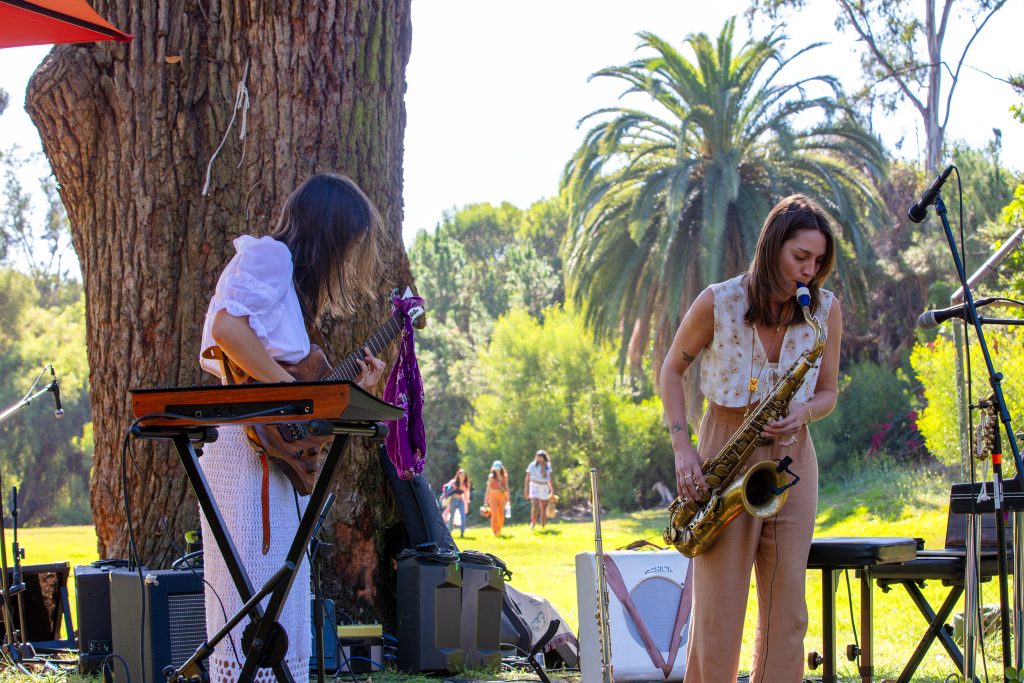
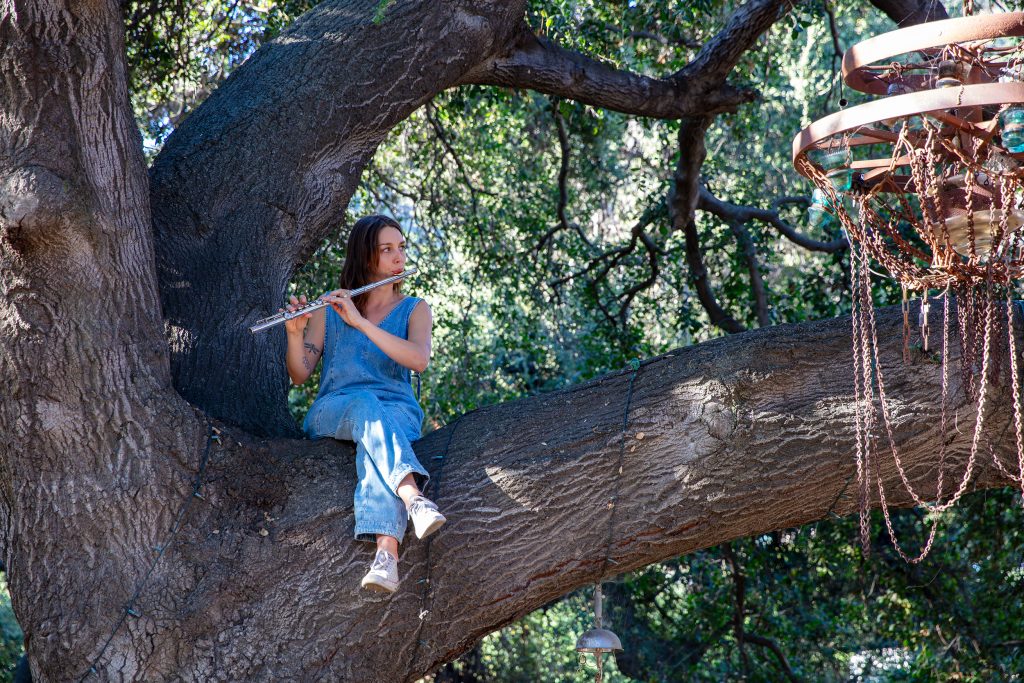
Circular Breathing
A Group of Three
Fisher, Brickman, and Niswanger have all built their lives around an art form with breath at its center. For Fisher, it’s not something he even questions anymore. “It’s just so intrinsic to your day. You don’t think about or feel every step you take—you just do it. And so that putting air into the instrument is part of that.”
For Brickman, there’s also a metaphysical element at play. “The saxophone is the only instrument to me that I can connect with my voice and have a spiritual connection,” Brickman reveals. “There’s no break from your soul to the sound; it’s us.”
Niswanger expands on this idea. “With these instruments, we have to have our life force pushing through,” she says. “I feel I’ve grown a lot more connected to how the breath can shift your whole nervous system, your whole being, your whole mental state.”
In Unison
As powerful as the experience is individually, all three get an added jolt of energy when collaborating with other wind players. “I think a Zen quality feeds into blending with the band,” Fisher says. “Playing in a horn section, my ears are glued to everything everyone else does. We’re all ingredients going into this meal.”
Brickman uses his experiences onstage with Niswanger to illustrate the same concept. “The Clairo band was my first experience performing with another wind player,” he reveals. “I’d never been in that situation. Luckily, Hailey is such a sweet human being we were able to meld. We both have different strengths and were able to bring those different approaches to the table.”
For Niswanger, it’s the notion of a collective feeling bigger than any individual. “It’s always the intention of a band to have one sound, right? Be intentional and in tune with open ears and create a beautiful sound together.”
"Playing in a horn section, my ears are glued to everything everyone else does. We're all ingredients going into this meal."
Randal Fisher
A Singular Expression
Still, behind every woodwind instrument is a unique person bringing it to life. “Two saxophone players can have the exact same saxophone, the same mouthpiece, the same reed, but those two people might get a different sound out of the instrument,” Fisher says. “When you get to the point where you have a unique sound, it starts to feel like something bigger than you.”
Niswanger agrees. “Your sound is your signature,” she says, “and that is based around air and the breath.”
While Brickman frequently utilizes electronics in his music, his internal world is equally holistic. “It’s all about shapes, feelings, and colors,” he says. “It’s more about that feeling and that expressiveness that can only be expressed through a wind instrument.”
